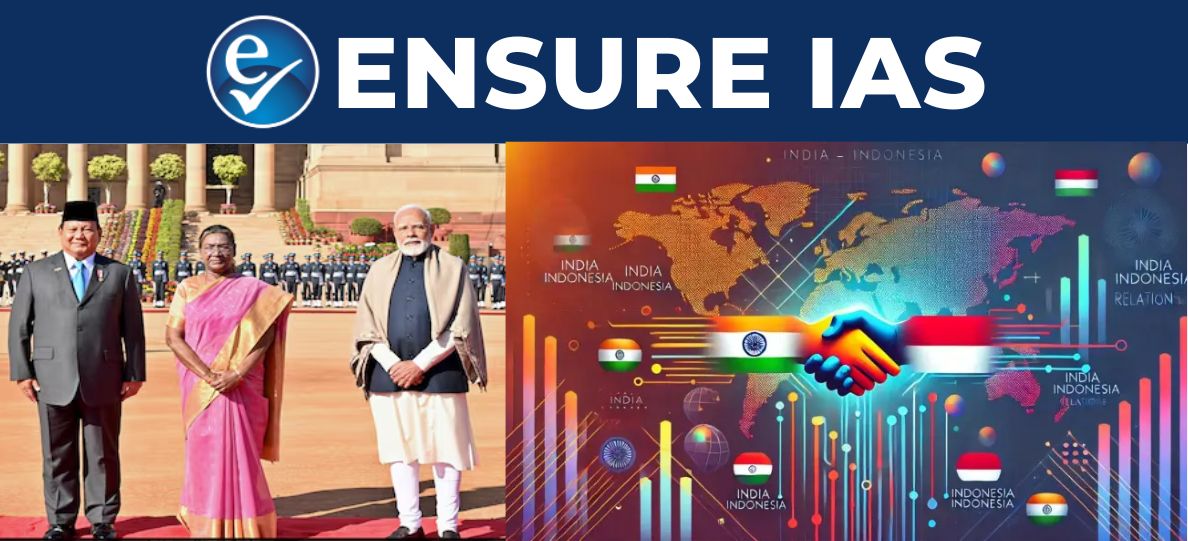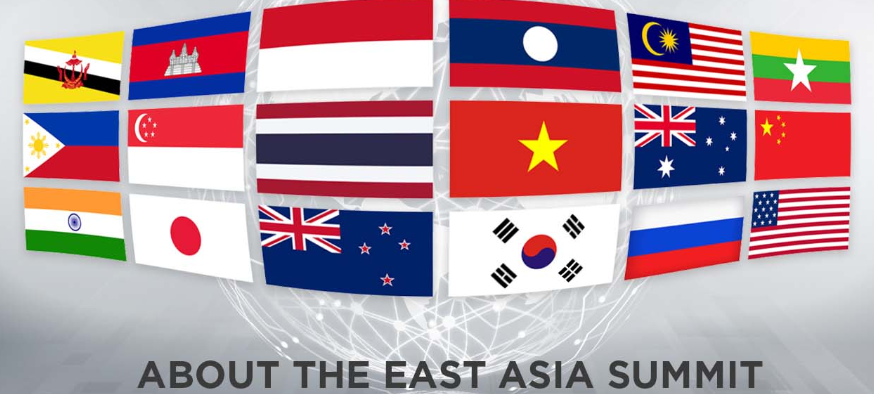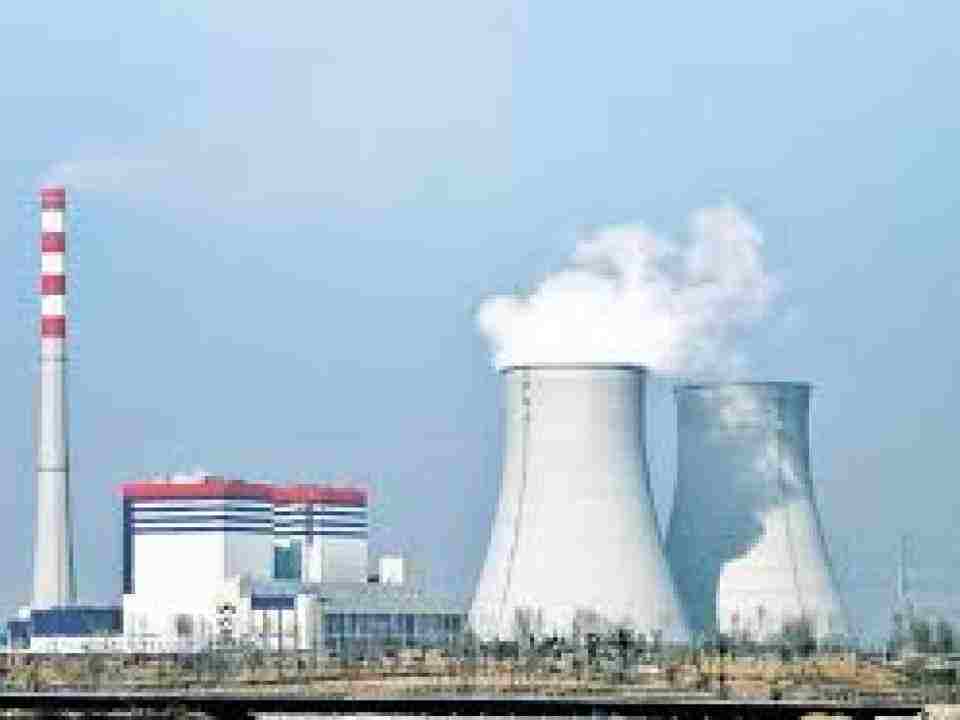- Courses
- GS Full Course 1 Year
- GS Full Course 2 Year
- GS Full Course 3 Year
- GS Full Course Till Selection
- MEP (Mains Enrichment Programme) Data, Facts
- Essay Target – 150+ Marks
- Online Program
- GS Recorded Course
- NCERT- First Ladder
- Polity
- Geography
- Economy
- Ancient, Medieval and Art & Culture AMAC
- Modern India, Post Independence & World History
- Environment
- Governance
- Science & Technology
- International Relations and Internal Security
- Disaster Management
- Ethics
- Current Affairs
- Indian Society and Social Issue
- CSAT
- 5 LAYERED ARJUNA Mentorship
- Public Administration Optional
- ABOUT US
- OUR TOPPERS
- TEST SERIES
- FREE STUDY MATERIAL
- VIDEOS
- CONTACT US
India-Indonesia Relations: From Sukarno to Prabowo Subianto
India-Indonesia Relations: From Sukarno to Prabowo Subianto

- Over the past 75 years, the bond between India and Indonesia has seen its ups and downs. A key moment came in 1950, when Sukarno, Indonesia’s first president, was the chief guest at India’s first Republic Day.
- As India celebrated its 76th Republic Day on 26 January 2025, Indonesian President Prabowo Subianto was invited as the chief guest, highlighting the continued strengthening of their diplomatic ties.
- What makes this year’s Republic Day even more special is the presence of the Indonesian President joined by a 152-member marching contingent and a 190-member band from Indonesia, marching alongside the Indian Armed Forces at the Republic Day Parade at Kartavya Path.
- This shows the unity between the two nations adds another chapter to the growing relationship between India and Indonesia, filled with promise for the years ahead.
|
On January 25, 2025, India and Indonesia took another step forward by signing several important agreements in areas like maritime security, health, traditional medicine, culture, and digital cooperation during a meeting between P.M. Modi and Indonesian President Subianto at Hyderabad House in New Delhi. |
1. Early Post-Colonial Solidarity (1940s-1950s)
- Both India and Indonesia fought against colonial rule in the 20th century.
- India’s support for Indonesia’s struggle for independence from Dutch colonial control played a critical role in the early development of strong bilateral ties.
- India, under Prime Minister Jawaharlal Nehru, was one of the first countries to support Indonesia’s independence from the Dutch.
- Nehru’s government provided humanitarian aid and diplomatic backing, and even took actions like banning Dutch airlines from flying over India in 1947.
- Moreover, In 1950, President Sukarno visited India as the guest of honor at India’s Republic Day celebrations.
- This was a symbolic recognition of the strong bilateral ties, with Nehru and Sukarno maintaining a close friendship rooted in their shared struggle against colonialism.
- Then, In 1951, India and Indonesia signed the Treaty of Friendship, aiming to establish "perpetual peace and unalterable friendship."
- This treaty highlighted the countries’ shared commitment to non-alignment and mutual support on global issues like anti-colonialism and peaceful coexistence.
- Both countries were key players in the Bandung Conference of 1955, which laid the the creation of the Non-Aligned Movement (NAM).
- Nehru and Sukarno were founding members of this movement, advocating for political independence and economic self-sufficiency for newly independent countries.
- This Bandung Conference also marked South-South cooperation between India and Indonesia.
How the Bandung Conference of 1955 laid the foundation of the Non-Aligned Movement in 1961?
How was the Bandung Conference and the Non-Aligned Movement connected?
|
2. Divergence and Cold War Alignment (1960s)
- Relations between India and Indonesia started in the late 1950s due to differing positions on China.
- Both countries initially saw China as an ally in the fight against colonialism.
- But things changed after India’s relationship with China deteriorated after the 1959 Tibetan Uprising and the 1962 Sino-Indian War.
- On the other hand, Indonesia kept its friendship with China, which created tensions between the two countries.
- The problems weren’t just political. Personal issues between India’s Prime Minister Nehru and Indonesia’s President Sukarno also added to the strain.
- In the 1960s, Nehru refused to support Sukarno’s idea of holding a 2nd Bandung Conference, which caused more disagreement between them.
- During the 1965 India-Pakistan war, Indonesia’s support for Pakistan caused a significant rift between India and Indonesia.
- Indonesia’s Foreign Minister announced support for Pakistan against India’s "aggression," and Indonesia even supplied arms to Pakistan.
- This resulted in an attack on the Indian Embassy in Jakarta, marking a low point in the bilateral relationship.
- In 1965, an attempted coup in Indonesia led to Sukarno’s weakening power and the eventual rise of General Suharto in 1966.
- Suharto’s anti-communist stance and shift towards a pro-Western foreign policy led to a recovery in Indonesia’s relations with India.
3. The Suharto Era: Recovery and Stagnation (1970s-1980s)
- Under General Suharto’s leadership, Indonesia began to improve its relations with India.
- The 2 countries signed key agreements in the 1970s, including a 1977 agreement that defined their maritime boundaries. This marked the beginning of a more stable period in bilateral relations.
- Throughout the 1970s and 1980s, India’s closer ties with the Soviet Union and Indonesia’s alignment with the United States during the Cold War affected their bilateral cooperation.
- Despite this, India and Indonesia continued diplomatic and trade relations, though they didn’t reach the highs of the 1950s.
- During the 1980s, both countries maintained regular diplomatic exchanges.
- Suharto visited India in 1980, while Indian leaders such as Indira Gandhi and Rajiv Gandhi made visits to Indonesia in the early 1980s, which helped maintain diplomatic ties.
4. ‘Look East’ Policy and Economic Reforms (1990s)
- In the early 1990s, India initiated economic liberalization under Prime Minister P.V. Narasimha Rao.
- The ‘Look East’ policy was also introduced to strengthen India’s economic and political ties with Southeast Asia, including Indonesia.
- This policy aimed to integrate India into the fast-growing economies of the ASEAN region.
- By the 1990s, both India and Indonesia experienced rapid economic growth.
- Indonesia’s economic boom presented India with new opportunities to enhance trade and investment, and bilateral cooperation expanded in several key sectors.
- So, India and Indonesia increased their strategic cooperation in regional security.
- Both countries shared concerns about regional stability, particularly in the South China Sea, and began holding joint military exercises ("Garuda Shakti") and sharing intelligence.
- In the 1990s, Both countries recognized the importance of regional stability and worked together on various multilateral platforms, including the East Asia Summit (EAS) and the ASEAN Regional Forum (ARF).
5. The 2000s and 2010s: Comprehensive Engagement
- Throughout the 2000s, India and Indonesia significantly increased their defense and security cooperation.
- They conducted regular joint military exercises and focused on enhancing maritime security cooperation. The growing maritime trade routes in the Indo-Pacific made security cooperation a key area of interest.
- Indonesia became India’s 2nd-largest trading partner in ASEAN by 2022, with bilateral trade reaching $38.84 billion in 2022-23.
- This trade includes coal, crude palm oil, and oil exports from Indonesia to India, while India exports refined petroleum, vehicles, and steel products to Indonesia.
- Cultural ties also strengthened, with more students from Indonesia studying in India and increasing tourism between the two countries.
- Educational collaboration, particularly in higher education, became an important part of their relationship.
- Since the 2000s, Every Indonesian president and Indian prime minister has visited each other's country, Promoting stronger ties across various fields.
6. 2020s: The ‘Act East’ Policy and Strengthened Cooperation
- In 2014, Prime Minister Narendra Modi introduced the ‘Act East’ policy, building on the ‘Look East’ policy.
- This policy focused on fostering practical, outcome-oriented cooperation, especially in defense, connectivity, and economic growth, with a particular emphasis on the Indo-Pacific region.
- President Prabowo Subianto’s visit to India in January 2025 highlighted the ongoing commitment to strengthening ties.
- Both countries signed agreements in areas such as maritime security, digital cooperation, traditional medicine, and defense industrial cooperation.
- As of 2023-24, bilateral trade between India and Indonesia was valued at $29 billion.
- India is one of the largest importers of coal and palm oil from Indonesia, while exports from India include refined petroleum products, commercial vehicles, and machinery.
- Despite these successes, experts believe there is still untapped potential in sectors like technology, infrastructure, and green energy.
Key Areas of Cooperation and Future Potential
- Maritime Security: Both nations are focused on maritime security in the Indo-Pacific, India and Indonesia cooperate on securing vital shipping lanes, which are increasingly important in the face of rising geopolitical tensions.
- Defense and Military Cooperation: India and Indonesia are enhancing their defense cooperation, including joint military exercises, defense technology sharing, and potentially collaborating on defense production.
- The agreements signed in 2025 indicate growing defense industrial cooperation.
- Regional Influence and Multilateral Platforms: Both countries are committed to ensuring regional stability and cooperation through multilateral platforms like the East Asia Summit (EAS) and the ASEAN Regional Forum (ARF), strengthening their strategic roles in the Indo-Pacific.
- Economic Potential: The economic partnership between India and Indonesia continues to grow, with ample opportunities in sectors like renewable energy, technology, infrastructure development, and the digital economy. Both countries aim to boost trade further, with potential for new projects and investments.
What is East Asia Summit (EAS)?
16 Streams of Work in EAS:Peace and Security, Sustainable Development, Climate, Environment, and Energy Cooperation, Education Cooperation, Finance, Health (including Pandemic Diseases), Natural Disaster Management Cooperation, ASEAN Connectivity Cooperation, Economic Cooperation and Trade, Poverty Alleviation, Food Security, Maritime Cooperation ,Strengthening EAS Institutional Capacity, Tourism Cooperation, Advancement and Empowerment of Women and Youth Participation and Other issues as identified by Leaders and Ministers. Recent Annual Summit:
What is ASEAN Regional Forum (ARF)?
Objectives
Participants
ARF Chair
|
|
Also Read |
|
FREE NIOS Books |
UPSC Daily Current Affairs |
UPSC Monthly Mgazine |
Previous Year Interview Questions |
Free MCQs for UPSC Prelims |
UPSC Test Series |
ENSURE IAS NOTES |
Our Booklist |





